Colorata has been making boxed sets of dinosaurs for several years now, which occasionally include dinosaur contemporaries like pterosaurs or mosasaurs, but in December of 2017 they released their first boxed set of prehistoric figures featuring exclusively non-dinosaur taxa. Say hello to the Extinct Animals: Paleozoic Creatures set. It features six animals, which span, oh, roughly 70% of the Paleozoic Era, and includes a little booklet with illustrations and information for each animal in Japanese and English. The Paleozoic Creatures set represents one of their strongest releases to date. In chronological order, let’s meet our heroes.
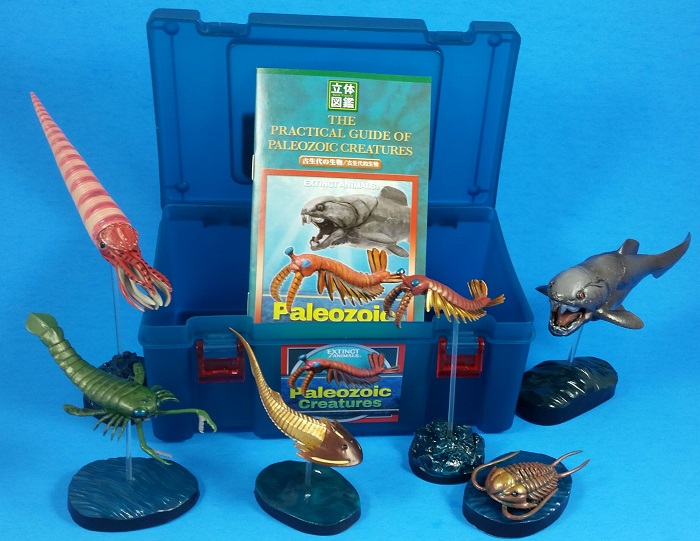
From the Middle Cambrian, the most famous denizen of the Burgess Shale, Anomalocaris canadense. No other prehistoric invertebrate has been made into a toy as often as Anomalocaris, so inclusion in this set feels almost mandatory. That said, this is a very nice rendition, one of the top 3 or 4 versions out there. It’s flexed concave, suggesting a dynamic, undulating swimming style. Like most of the figures, it has a simple but attractive base, to which it is attached by a clear acrylic rod. It’s about 4.5 cm long, or roughly 1:15 or 1:20 scale.
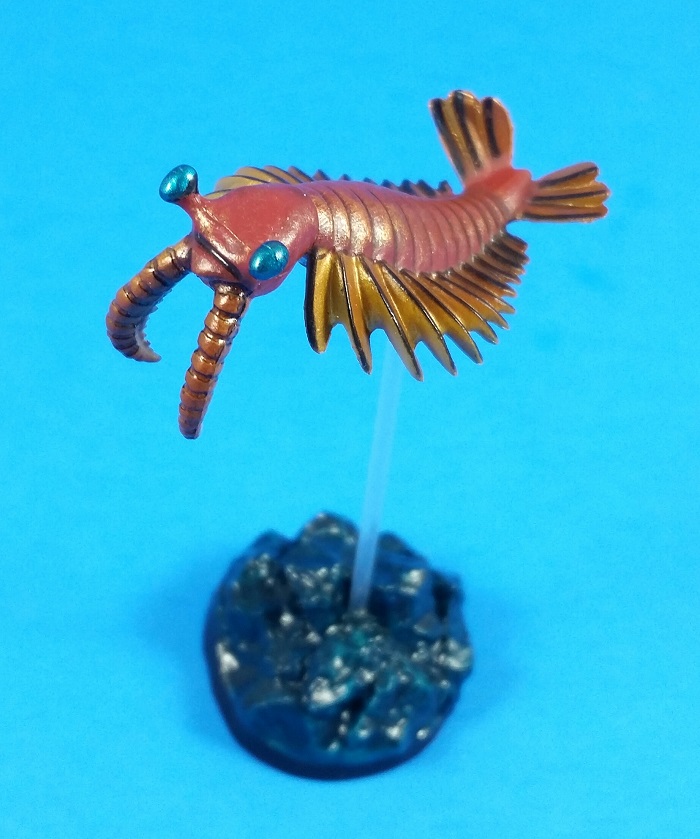
The smallest piece in the set is a contemporary of Anomalocaris, the suddenly ubiquitous Cambrian trilobite Olenoides serratus. Now that Safari’s Cambrian Life Toob is discontinued, every single in-production toy depicting a live trilobite is Olenoides serratus. No other species are in production, but there are four of this one! Three of those four became available in the last 18 months or so, so it’s probably a coincidence, but a remarkable one! I would rather have had some new variety, as trilobites were incredibly diverse, but this is an accurate and attractive version, superior to the CollectA version. It’s about 3.5 cm long, and hence 1:2 – 1:3 scale.
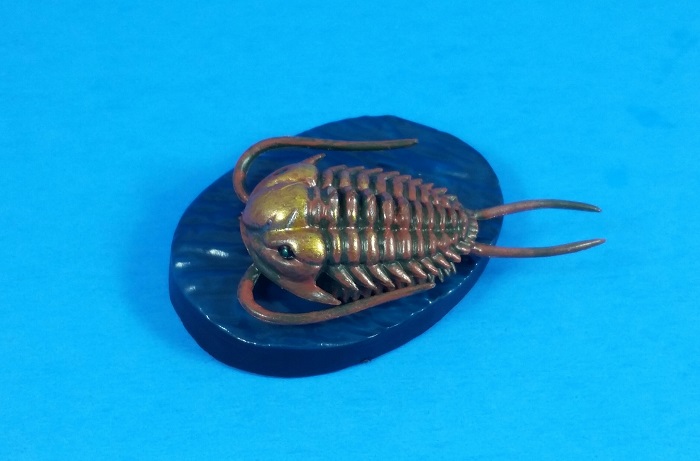
Jumping ahead to the Ordovician, we meet Cameroceras trentonense, a gigantic orthocerid cephalopod (related to modern nautilus, and, more distantly, squids and octopuses). This is the largest orthocerid toy I’m aware of, and it’s a beauty. It shows a ventral siphuncle, ten tentacles, and a dorsal hood like that of a modern nautilus. To the best of my knowledge, these are all plausible features, although only the shell of Cameroceras is known. The figure’s shell is about 10 cm long, so if it represents a 6 meter individual, it’s roughly 1:60 scale. The Ordovician is the most neglected period of the Phanerozoic when it comes to toys, so this is a great addition.
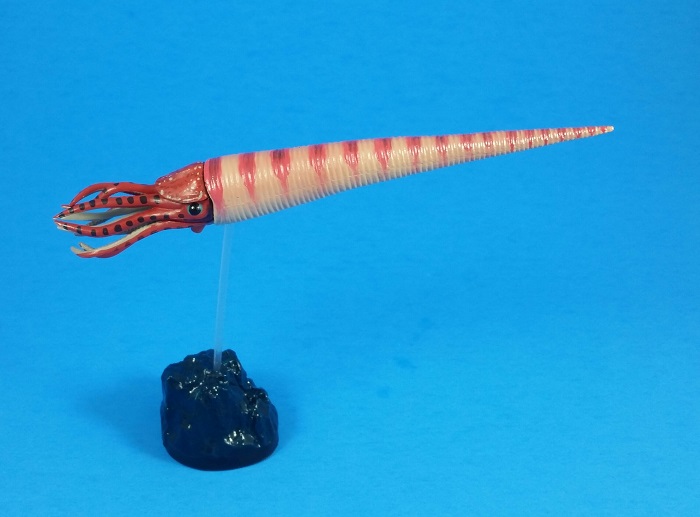
From the Silurian, we have Acutiramus macrophthalmus, a large eurypterid, or “sea scorpion.” It’s got a nice metallic finish, and clearly shows the right number of tergites, compound eyes, and ocelli. It’s a fairly familiar morphology to Paleozoic fans, much like its close relative Pterygotus; maybe a more adventurous choice would have been something weird like Megalograptus. Nevertheless, a well-executed piece. It’s a little over 7 cm long, making it roughly 1:25.
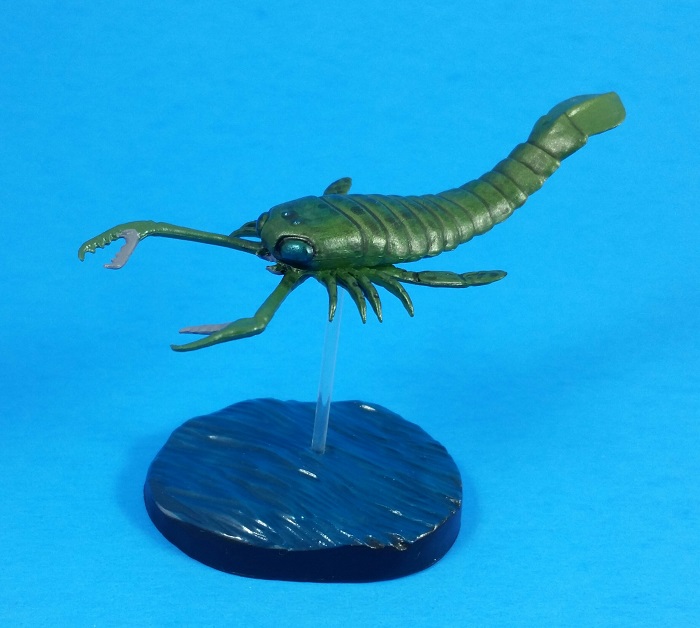
On to the early Devonian and Cephalaspis lyelli, a jawless armored fish that gives its name to the wonderfully strange and diverse clade Cephalaspidomorphi. These early Devonian jawless fish are not made often, maybe precisely because they don’t have jaws, and hence no big scary teeth or shearing bony plates to fill them with. The armor is accurately detailed, the body shape is appropriately slender, and the fields of sensory equipment are subtly picked out in contrasting colors at the top and sides of the head shield. This is probably my favorite of the set, though your mileage may vary. The figure is a little over 8 cm long, so between 1:3 and 1:4. Like the eurypterid and trilobite, the finish is slightly metallic, emphasizing the armor nicely.
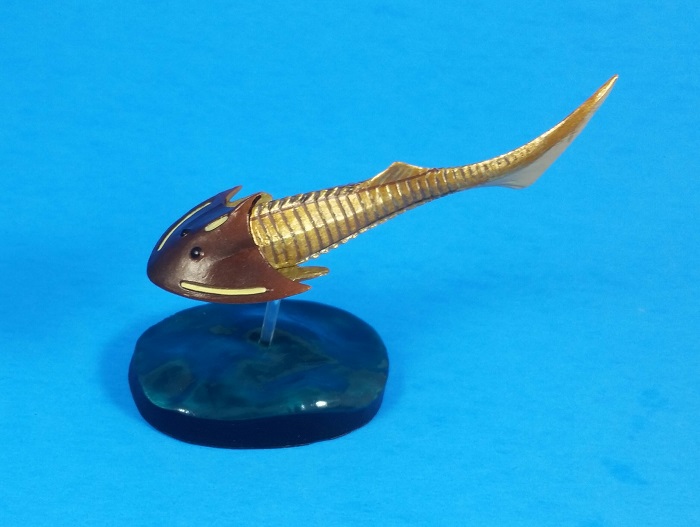
The other obligatory inclusion for a set of Paleozoic aquatic animals is Dunkleosteus terrelli, by now probably the most frequently made prehistoric fish. It’s no doubt the reason many people will buy this set. With a length of about 14.5 cm and a head width of a little over 2 cm, it’s roughly 1:55 scale. The tail is just barely heterocercal, which is fine insofar as the tail of Dunkleosteus has never been found. Nevertheless, it doesn’t make a lot of sense biomechanically. A large animal like this would probably have needed something more strongly lobed. The other five figures in the set can be mounted on their bases with rods of identical diameter (thin enough to cut to custom length with scissors). However, this figure comes on its own special, thicker rod, which has a ball on the tip that lets the Dunkleosteus vary its angle (its pitch and roll). This is a cool touch, giving lots of flexibility for display.

It’s painted a uniform shark-like gray, with the oral bone plates picked out in a high-contrast white. I would have preferred a paint job that emphasized that these plates are not teeth. I also think this figure would have benefited from more lips and skin around the mouth and head. The gap between the head and back plates looks like just another plate. And the diameter of the eyeball is oddly small, making it look like the sculptor or painter tried to fit it inside the sclerotic ring (a set of small bones set inside the eyeball that help maintain its shape). The overall effect is slightly ghoulish. It’s far from the worst Dunkleosteus on the market, but it’s probably the weakest piece in this set.
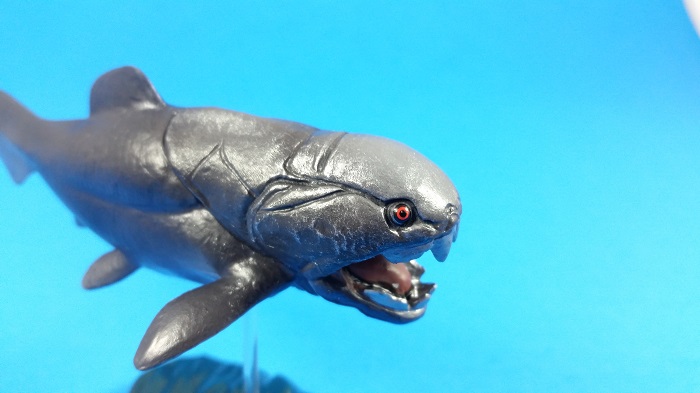
This set offers a nice balance of vertebrates and invertebrates, and covers four of the six periods of the Paleozoic. Some of the species choices feel a little ho-hum, but that’s usually true with Colorata’s sets. On Colorata’s website, the URLs for their four dinosaur boxed sets end in “dd1” through “dd4”. This set ends in “ex1”. With luck, that means they’ll make more Extinct Animals sets, maybe including one with Paleozoic terrestrial animals from the Carboniferous and Permian. More like this, please, Colorata! Whereas Colorata does not seem to offer direct orders outside of Japan, these are showing up on auction sites and before long they will probably be on Amazon. I recommend them for any prehistoric fan except the types who collect only dinosaurs.
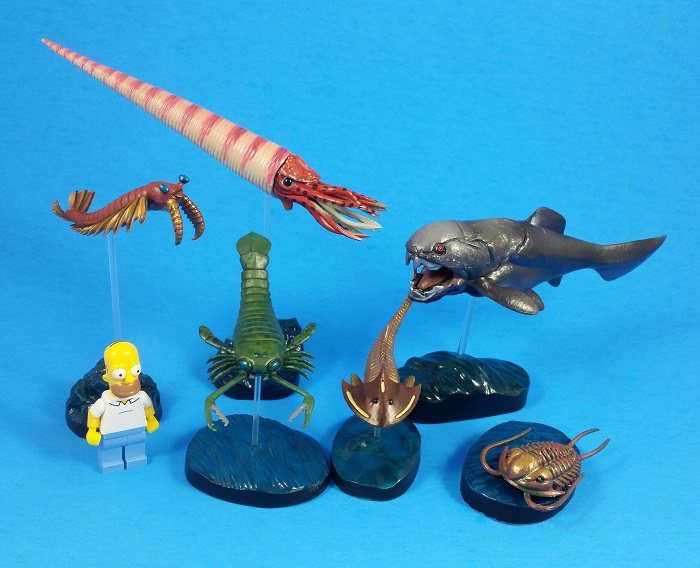
Disclaimer: links to Ebay and Amazon on the DinoToyBlog are affiliate links, so we make a small commission if you use them. Thanks for supporting us!




Nice review, Tim. I’ts a nice set. I will be retaining the arthropods but the other three are being sold to postsaurichian 😉
It’s funny that for years there was only one Olenoides figure (the ROM one) and then in less than two years…BOOM! We have three more. This Colorata one might be my favorite. Because of its size, it’s not as detailed on the underside as the Favorite LTD one, but I like the metallic luster (and I am a sucker for figures with bases).
Thanks very much! That reminds me, you and I should get to reviewing the Favorite Cambrian figures.
I have images of all of them. I was thinking of doing it as a set. You want to make it a joint effort? We can discuss more offline via email 🙂
This is a really beautiful set!
The figures of Colorata are interesting figures in this case, what really catches my attention are the metallic colors of these figures.
It is worth having any collector. The figure that perhaps draws my attention the most is by far the eurypterid for me is the most striking figure in the group.